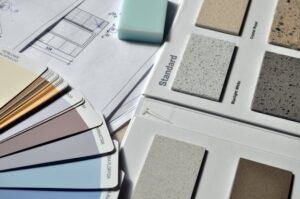
Choosing the right materials for the outside of your home is essential for longevity and aesthetic appeal. With so many options available, choosing the materials that would best suit your needs might not be simple. This article offers five suggestions to make sure you pick the best materials for the outside of your house and to assist you in navigating the choosing process.
Consider Your Climate
Your environment is one of the most important things to consider when choosing exterior materials. Certain climates suit some materials more than others. For instance, fiber cement siding could be more appropriate in places with significant temperature swings. Yet, vinyl siding is a common choice in locations with mild weather to maintain lifespan and reduce maintenance costs; consider how the material will survive rain, snow, wind, and sunshine in your region. You may maximize the functionality and longevity of your home’s exterior and lessen the need for regular repairs or replacements by choosing materials that are durable and suitable for the environment in your area.
Evaluate Maintenance Requirements
It’s important to consider the upkeep needs of each material choice when assessing materials for home exteriors. Certain materials have the benefit of requiring little upkeep and being readily cleaned with soap and water, like vinyl siding. For homeowners looking for low-maintenance options, this makes them a desirable option. However, to maintain their aesthetic and guard against moisture damage, materials like wood siding could need more frequent maintenance, including painting or sealing regularly. Evaluating your desire and capacity to devote time and energy to the upkeep of the selected materials over time is crucial. Working together with a trustworthy gutter company in South Carolina or wherever you live may also help you maintain the outside of your house overall.
Assess Longevity and Durability
Purchasing strong, long-lasting materials is essential to safeguarding the outside of your house from harm and maintaining its worth over time. Examine the anticipated life expectancy of various materials and take into account elements such as moisture, pest, and rot resistance. Even though certain materials may initially cost more, they may wind up saving you money on repairs and replacements over time. Additionally, give preference to materials that have a track record of lifespan and durability in the climatic conditions and climate of your area. You may make well-informed selections that will improve your home’s external resiliency and add to its overall value and curb appeal for years to come by doing extensive study and speaking with specialists.
Think About Aesthetics
Choosing materials that match your house’s architectural style and express your taste is crucial because the outside of your home is the first thing guests notice. To make sure your decisions improve the curb appeal of your house, get ideas from the homes next to yours or speak with a design expert. Furthermore, consider how your material selections will seem in the long run because trends might alter. In the event that you ever decide to sell, you can make sure that your house keeps its aesthetic appeal and appeals to prospective buyers by choosing designs that are classic and adaptable.
Evaluate Cost vs. Value
Not only must financial constraints be considered, but the materials’ long-term value must also be assessed. Although using less expensive materials now could save you money, they might need to be replaced sooner rather than later or require more frequent maintenance. On the other hand, although the initial cost of investing in sturdy, high-quality materials may be more, doing so might save you money over time by lowering replacement and maintenance expenses. When choosing materials, keep in mind the possible return on investment as well. Some choices may significantly raise the value of your house and improve its resale potential. Speaking with real estate experts or carrying out market research may provide you with important information about which materials for your particular house and region offer the best balance between affordability and value development.
Conclusion
When selecting the best materials for your home’s exterior, consider factors including weather, maintenance requirements, lifetime, durability, beauty, and professional advice. These five tips will assist you in making well-informed decisions that will enhance your property’s appearance, protect it from the elements, and ultimately increase its worth. By carefully weighing these elements and getting professional guidance when necessary, you can ensure that it offers you, as a homeowner, long-term value and enjoyment.


